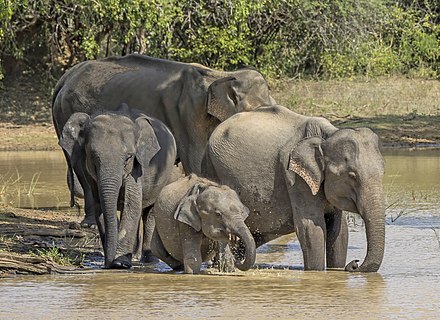Sri Lankan Elephant (Elephas maximus maximus)
Bishal_Pics · 8 months ago
The Sri Lankan elephant is the largest Asian elephant species. They can grow up to 11.5 feet tall and up to 12,100 pounds. They have a darker skin tone and unique patches of depigmentation on their ears, face, trunk, and belly. This elephant inhabits the dry zones of Sri Lanka and feeds on grasses, leaves, stems, and bark, consuming up to 150 kg of food daily. They are social animals whose herds typically consist of 12-20 individuals, led by the oldest female. Elephants hold centuries-long significance in Sinhalese and Sri Lankan Tamil cultures, featuring prominently in heraldic symbols, coats of arms, and flags. Integral to religious processions, Buddhist and Hindu temples have often kept their own elephants, indicating a deep-rooted human-elephant co-existence. Unfortunately, Sri Lankan elephants face threats from human encroachment2, land mines, and occasional ivory poaching. With high elephant mortality rates, an annual average of 370 deaths were recorded in recent years.
